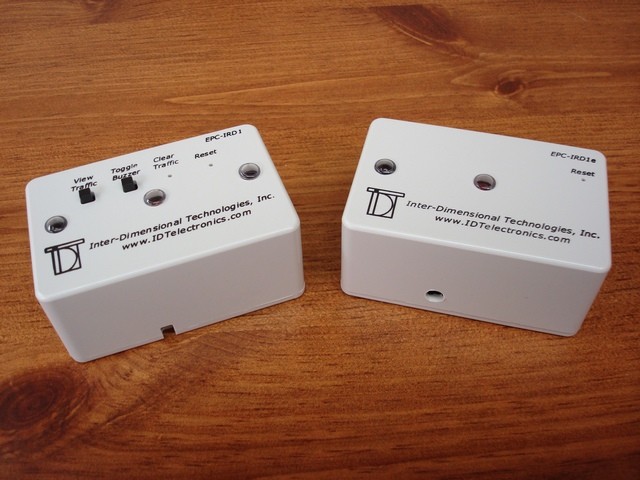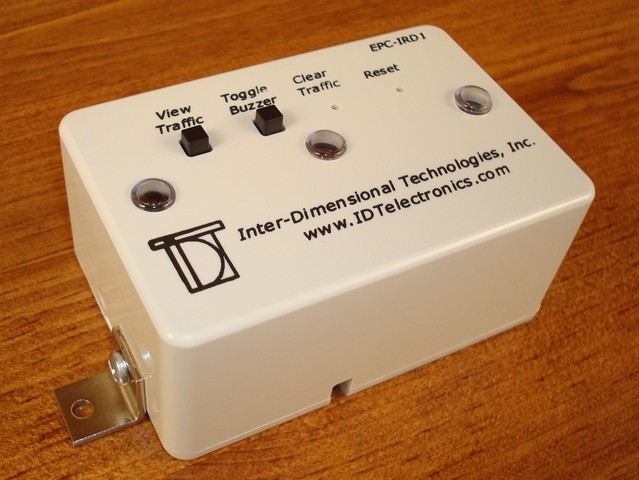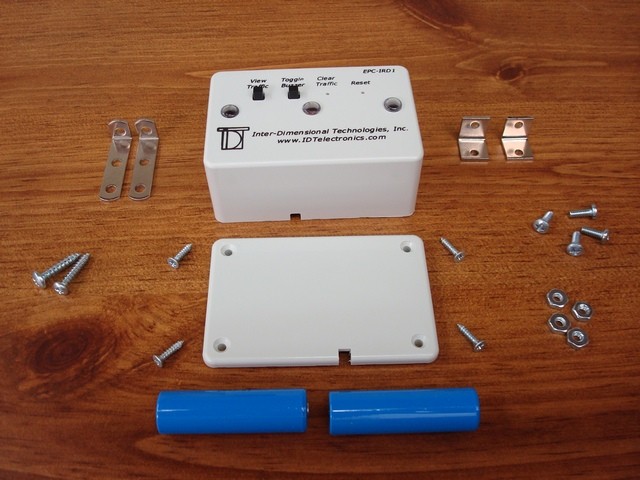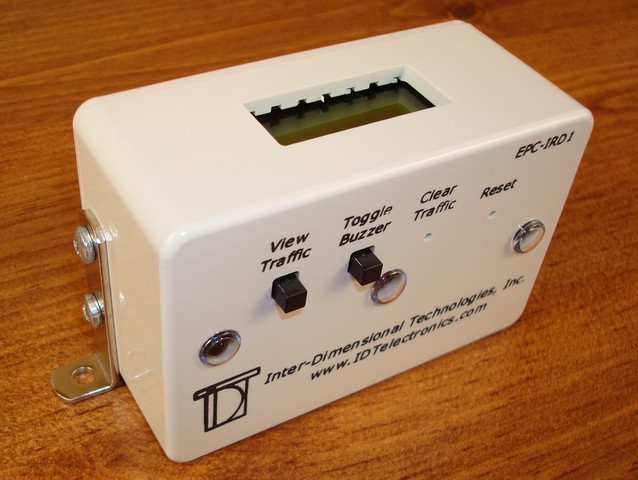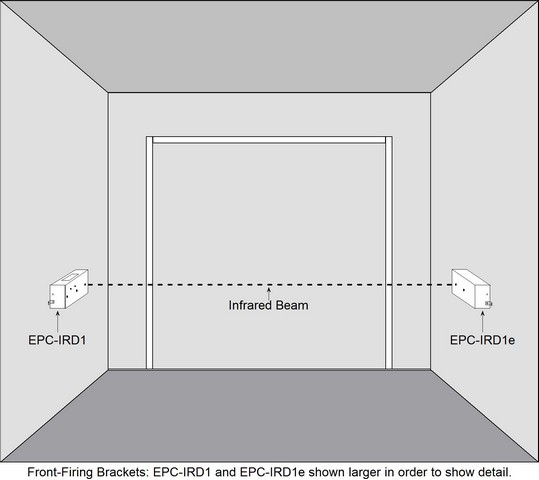EPC-IRD1 Visitor Pedestrian & Optional EPC-IRD1e Infrared Emitter:
Using the EPC-IRD1 Electronic Pedestrian Counter along with the EPC-IRD1e Infrared Emitter creates a pedestrian counting system with an approximate maximum sensing distance of 35 feet.
As with the EPC-IRD1 Pedestrian Counter, the EPC-IRD1e can be powered with two AA-Sized 3.6V Lithium batteries or with an A/C adapter. The EPC-IRD1 saves one single running traffic total and senses and counts pedestrians entering and leaving. The EPC-IRD1 is the same exact physical size of the EPC-IRD1E and they look very similar to each other. This makes them aesthetically-pleasing when installed.
Overview:
The term, “wireless” typically refers to wireless communication. However, it’s been our experience that when people typically refer to “wireless pedestrian counters,” they don’t necessarily want a system that transmits data to a PC, the Cloud/Web or a network. Instead, what they are really referring to is a pedestrian counter that does not have to be plugged into an A/C outlet or have any other wires that connect to a third-party device; hence, the term, “wireless.”
To that end, the EPC-IRD1 can be considered to be a wireless pedestrian counter because it is an autonomous system that does not connect to any third-party devices. Therefore, if you’re looking for a wireless pedestrian counter, in that it runs autonomously (by itself with no external help from other devices or networks), then the EPC-IRD1 and EPC-IRD1E Combo may suit your needs.
Here are some features of this system.
Low-Battery Indicator:
The EPC-IRD1 Pedestrian Counter and EPC-IRD1E Infrared Emitter both include a low-battery indicator.
5 User-Selectable Beam-Strength Levels:
The infrared beam strength can easily be set to one of five different settings in the EPC-IRD1E. This allows you to set the infrared beam strength to a strength suitable to your entrance width, while allowing for maximum battery life.
Flexible Mounting Options:
The EPC-IRD1 Pedestrian Counter and EPC-IRD1E can either be mounted in a Side-Firing (Quick Popup of Image) configuration or a Front-Firing (Quick Popup of Image) configuration.
Method of Sensing:
The internal infrared emitter of the EPC-IRD1 Pedestrian Counter should be turned off via a menu option when used with this optional EPC-IRD1E. In this scenario, the EPC-IRD1 is only used as a receiver and the EPC-IRD1E is used as a dedicated infrared emitter. The EPC-IRD1E emits a beam across the entrance. The EPC-IRD1 is mounted on the other side of the entrance and receives this infrared beam. It will not sense the beam for that brief period of time when a pedestrian breaks the beam. The EPC-IRD1 will count the pedestrian when it senses the absence of this infrared beam.
When Should I use the EPC-IRD1 without the optional EPC-IRD1E Infrared Emitter?:
When the EPC-IRD1 Electronic Pedestrian Counter is used by itself, it can accommodate standard entrances of approximately three feet wide. If you have an entrance that is wider than three feet, then you can use the EPC-IRD1 and EPC-IRD1E combo that is explained on this product page. This product page explains how they work together and allows you to purchase them as one item, instead of two separate items.
Powering the EPC-IRD1 and EPC-IRD1E:
The only items that are not included with the EPC-IRD1 & EPC-IRD1E for standard installation are the batteries and/or A/C adapters. The batteries have a shelf life of ten years, so you can purchase additional sets to keep on hand. The price of the batteries is also less when purchasing at higher quantities.
When using the EPC-IRD1 and EPC-IRD1E, here are the combinations of how this pair can be powered:
- Four batteries
- Two batteries and one A/C adapter
- Two A/C adapters
Documentation:
Please review the links above in the ‘Related Links’ section for more information.
Not sure yet? Click here to view a summary of all our people counters

